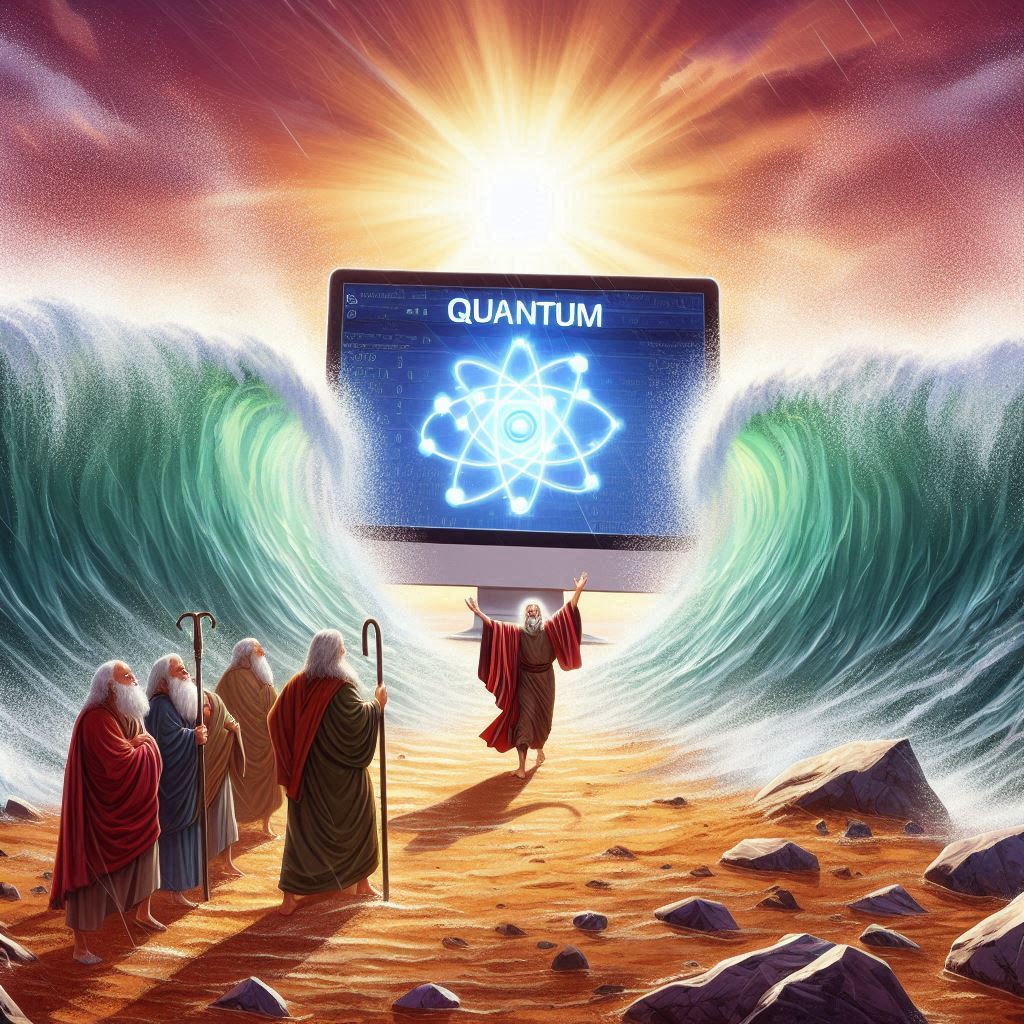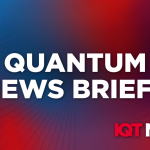Journey to the Quantum Promised Land

Quantinuum and CU Boulder recently announced that they created a logical four-qubit GHZ state using a non-local qLDPC code. GHZ states are a simple way of assessing quantum computer hardware, because the qubits should measure all zeroes or all ones – all other measurement outcomes are in error – so it is quick and easy to visualize device quality. qLDPC codes benefit ion trap and neutral atom modalities by leveraging their all-to-all qubit connectivity to reduce circuit depth and lower the counts of gates required to execute an algorithm.
Normally, the big deal here would be that four logical qubits outperformed four physical qubits, surpassing the coveted “breakeven” milestone, but this story has a bigger deal than that.
What’s a “logical” qubit?
We encode information onto physical qubits, but physical qubits are currently too error prone to be useful with the deep quantum circuits we want to run. Fortunately, information can be encoded redundantly across multiple physical qubits such that the error rate of each resultant “logical qubit” is lower than the error rates of its constituent physical qubits.
A few short years ago, estimates were that 1,000 physical qubits would be needed to encode each logical qubit. This ratio had made the notion of large-scale fault-tolerant quantum computing (FTQC) seem implausible. However, this ratio has been improving over recent years with the introduction of novel quantum error correction (QEC) codes and quantum low-density parity check (qLDPC) codes. In fact, Quantinuum surpassed the “breakeven” milestone by encoding 4 logical qubits with only 25 physical qubits.
Why do we need logical qubits?
Breakeven is important, but it’s not enough. Logical qubits don’t just have to be better than physical qubits, they have to be much, much better than physical qubits. And while advancements in both logical and physical qubits are expected to continue in the coming years, advancements in logical qubits are expected to come much faster. Quantinuum anticipates its next breakthrough, for example, might jump from four to eight logical qubits.
Quantum Volume (QV) is a measure of a quantum computer’s computational power, indicating the largest quantum circuit you can expect to run on that particular device. And while QV scores have been rising steadily over the years – Quantinuum doubled its previous record thrice this year – advancements in physical qubits are not expected “to get to the promised land,” as Dr. Dave Hayes puts it. Logical qubits will be needed to get there.
There’s another breakeven milestone.
Quantinuum is already the recognized leader in QV, so now it’s talking about an analogous logical QV. In other words, what is the largest quantum circuit that can be run on a quantum computer that encodes quantum information on logical qubits?
If logical QV can follow the history of physical QV, a pivotal moment will occur when logical QV scores begin to pass physical QV scores. At the moment, Quantinuum has only one data point, which is a logical QV of 256. A logical QV of 256 is derived from 2^8, which means that 8 logical qubits can execute a quantum circuit with depth 8. Although there is still a lot of work to do to reach large-scale fault-tolerant quantum computing, the score of 256 is significant in another way.
The highest physical QV scores outside Quantinuum (which currently boasts a physical QV of 2^20=1,048,576) are reported by IBM Quantum, which reported a physical QV of 2^8=256 on April 6, 2022, and is currently reporting a physical QV of 2^9=512. While the jump from 256 to 512 might seem significant, QV scores always increment by doubling. The significance of these numbers is that Quantinuum is already reporting a logical QV of 256, which is only one announcement away from equaling IBM Quantum’s best physical QV, only two announcements away from surpassing it, and already surpassing everyone else’s reported physical QV scores. That certainly seems like a big deal.
Quantinuum still has a way to go to surpass its own physical QV scores, but it is hoping for exponential advancements akin to a “logical Moore’s Law.” At that rate, it could potentially catch up to itself within a few years.
Conclusion
Logical Quantum Volume is a logical – pardon the pun – metric for assessing how close we are to large-scale fault-tolerant quantum computing. If Quantinuum can make the progress it hopes to make, the next few years ought to be exciting.
Speaking of excitement, did you know that you can play with Quantinuum’s hardware for free? Microsoft Azure offers some free time, and you can also apply for some free time through Oak Ridge National Laboratory (ORNL). You can follow along on Quantinuum’s journey, conduct some research of your own, and hopefully reach the “promised land” of quantum computing in less than 40 years.



















